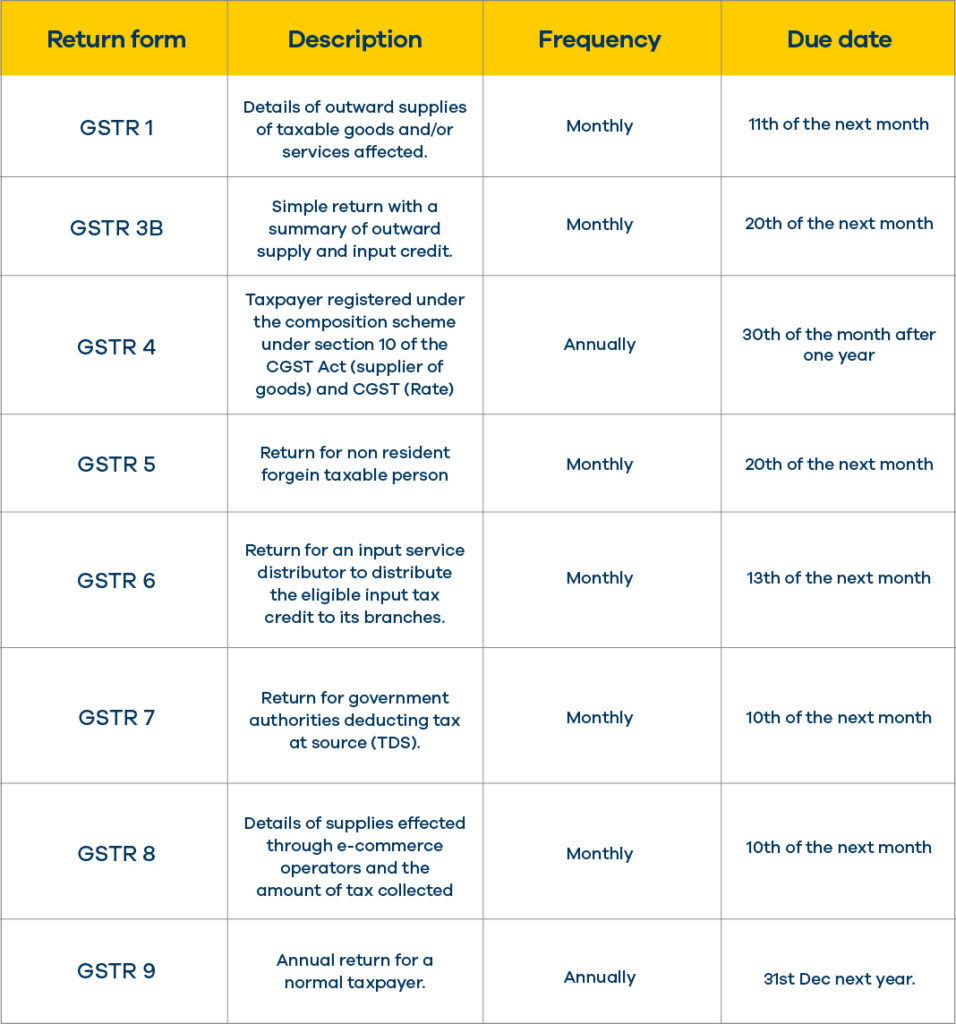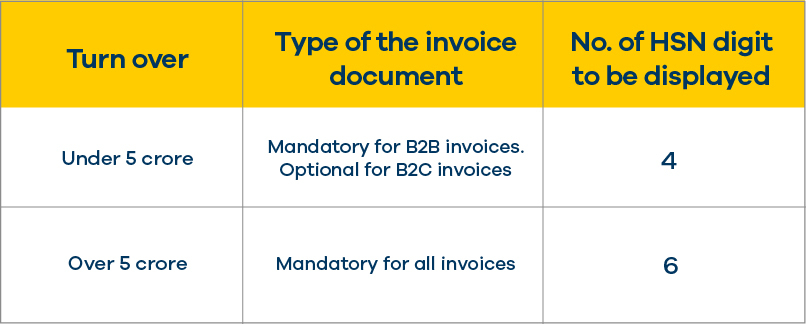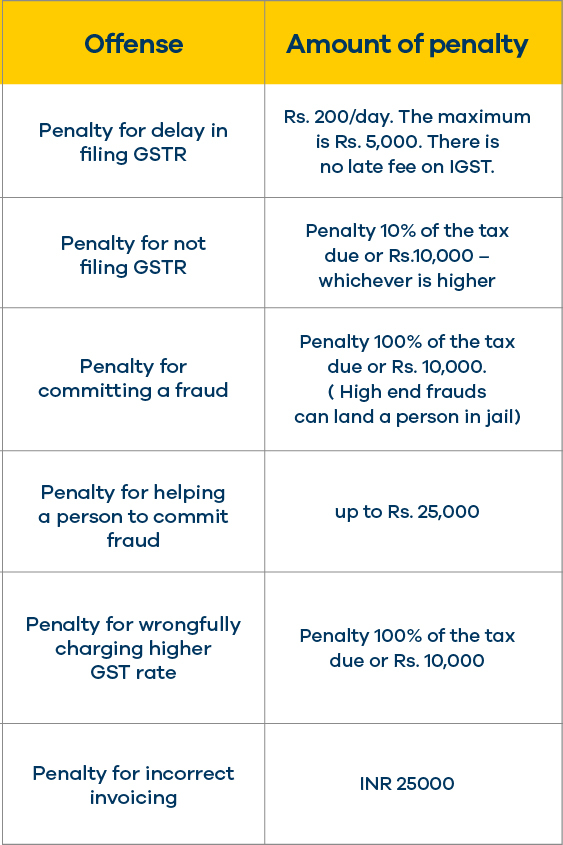The Goods and Services Tax, ever since its launch, is one topic that’s kept all of us busy learning. In this article, we’ll discuss everything GST. What is GST, how to file it and all that you needed to know about it. Ever!
Even a few years ago indirect taxes in India were pretty complex. A business person had to pay a long list of indirect taxes like VAT, central excise, service tax etc, depending on his/her business operation. If that does not sound complex enough, each state had varying rates of taxes.
GST reform in 2017 changed all of that. GST replaced multiple indirect taxes and made taxes way easier to understand and file. The effect of GST was so profound on Indian economy that it is one of the major reasons behind India’s rise to 63rd place in the World Bank’s ease to do business rankings 2020.
However, for many Indians GST is still a mystery. Some are still not sure if they should get themselves registered. Some are struggling to understand how to calculate and file GST. Some are having a hard time figuring out how to be fully compliant.
To clear up those confusions and misconceptions, we will cover everything about GST and clear all your doubts on GST.
Let’s dive in.
What is GST
GST or Goods and Services tax is a value-added tax imposed on goods and services. In order words, GST is applicable whenever value is added to a product at any stage of the supply chain. For instance, if you purchase leather and make boots on a commercial scale, you are adding some value. Thus GST is applicable.
GST has replaced a total of over 15 indirect taxes and bought India under one tax scheme. Earlier, different tax rates in different states result in varying prices of a single product across India. This certainly hindered interstate trades, to some extent. After the introduction of GST, we have a uniform tax system all over the country.
Here are the primary objectives of GST:
Elimination of cascading tax effect
Under the GST bill the taxes are levied on only the “net” value added to the product. This eliminates “paying tax on tax” situations and in turn, lowers the price.
Decrease corruption
GST eliminates most of the indirect taxes making the tax collection process more transparent.
Increase tax compliance
India has massive numbers of businesses and individuals who had a hard time with tax compliance. By simplifying the filling process and registration process, GST made tax compliance a lot easier.
History of GST
A uniform value-added tax system like GST isn’t a new concept. In 1954, France adopted something very similar. Soon other countries including Australia, Canada, Monaco etc followed in France’s footsteps.
In 2000, then Indian Prime Minister Atal Bihari Vajpayee set up a committee to propose a Goods and services tax model. However, GST came into force in 2017, after 17 years. Here is a brief history of GST:

Advantages of GST
The GST tax system is great for Govt Indian and the overall Indian economy. But what does it bring to the table for business owners?
Well, GST does make business owners’ lives easier in so many ways.
No-cascading tax effect
Allow us to give an example. In the earlier system, suppose you were charged a 10% excise duty on an INR 100 product. You want to sell it at the price point of INR 150. In that case, you have to pay a 10% VAT/Service tax on that INR 150 price. So you included the tax charges and the final price is now 150+(10% of 150)= 165 INR.
Now think about it. Your customer has to pay tax on the INR 10 tax amount you already paid. This “tax on tax” situation is called cascading effect.
With GST, you can claim your “input credit” ( the GST tax you already paid) and eliminate the cascading tax effect. In our example, under the GST rule, you can show your INR 10 tax and charge your customers only (15-10) =INR 5 as GST.
Now you can set your price 150+5= INR 155 to keep a profit of INR 40. In a nutshell, GST removes the cascading tax effect and lowers the overall price.
Uniform tax system
GST simplified indirect taxes and standardized tax rates all over India. Such a centralized and uniform tax system makes both expansions of business and overall tax-related paperwork easier.
Simplified GST online process
Previously businesses had to deal with different tax authorities for a single business operation. It’s very confusing and time consuming, at the least. On top of that, most procedures were offline which significantly prolonged the overall process.
Under the GST regime, almost the whole tax filing process is online.From registration to return filing to refunds to e-way bill generation, you can do it all with just a few clicks.
GST increased the ease of doing business
An uniform tax system, convenient tax filing procedures and relatively lesser compliances- all components of GST makes it easy for businesses. Now you can pay the same amount of tax all over India, easily appeal and resolve tax related legal issues and do cross border business without much hassle.
Clear eCommerce guidelines
India, a country with 700M internet users, is going through an internet revolution. No wonder the numbers of e-commerce and other internet businesses are on the rise. Unlike the previous system, GST provides a clear tax guideline applicable for e-commerce businesses.
Components of GST
Four types of GST taxes cover every single taxable situation. These are:
CGST
CGST (Central Goods and service tax) is charged in case of intrastate transactions. The tax collected through CGST is central Govt’s to keep according to the GST bill.
SGST
State authority collects SGST ( State Goods and service tax) when an intrastate transaction takes place.
UTGST
UTGST( Union territory goods and service tax) is like SGST but applicable only in Union territories like Delhi, Puducherry etc.
IGST
In case of interstate transactions central govt collects IGST ( Integrated Goods and services tax). A part of IGST goes to the destination state tax fund.
This is how tax structure looks like under GST regime:

Who is eligible for GST Registration?
GST registration is mandatory for businesses and individuals who are mentioned in this list:
- Any business involved in the supply of goods with 40 lakh yearly turnover in Normal category states and 20 lakh in special category states.
- Every person/business who is registered under previous indirect tax laws ( VAT, service tax etc).
- Any business that provides any service and scored over 40 lakh yearly turnover ( in Normal category states) or 20 lakh ( special states).
- When a business that is registered has been transferred to someone/demerged, the transferee shall take registration with effect from the date of transfer.
- A person who supplies goods in different states.
- A Casual taxable person ( A person who occasionally supply goods in an area where GST is applicable but he does not have any fixed place of business).
- Non-Resident taxable persons (Same as a casual taxable person but a non-resident taxable person doesn’t have a fixed business place in India).
- Agents of a supplier with a large sum of yearly turnover.
- An individual who supplies via an e-commerce aggregator.
- An individual supplying online information and database access or retrieval (OIDAR) services from a place outside India to a person in India, other than a registered taxable person.
- Ecommerce operators.
- Those paying tax under the reverse charge mechanism.
How to register for GST?
If you or your business matches with any of the above-mentioned entries, you need to register for GST. The process is straightforward.
Just go to the GST portal. Under the “service” tab choose new registration. Upload all the required documents ( including PAN), fill out the details and you are all set.
You need the following documents to register your business for GST:
- Permanent Account Number (PAN)
- Copy of the aadhaar card
- Proof of business registration or incorporation certificate
- Identity and address proof of directors with a photograph
- Bank account statement/cancelled cheque
- Authorisation letter/board resolution for authorised signatory
- Digital signature
Once submitted, you can check the status of your application with ARN ( Application reference number).
How long will it take to get GST number?
Usually, you will get your GSTN number within weeks. GSTIN is a 15- digit unique code allotted to every registered business or taxpayer under GST. If your yearly turnover is over 20 lakh, you need this GSTIN number to stay legal.
GST Slab Rates
Over 1300 items and 500 services come under GST tax. All of these are segmented into 4 categories: 5% slab, 12% slab, 18% slab and 28% slab.
The rule of the thumb is, the more essential a product is, the more likely it would be on the lower tax slab. On the other hand, luxurious items often get taxed heavily. Also essential items like grain, dairy etc require no GST taxes.
Here is a brief description of each slab to give you a better idea:
How to calculate your GST charges?
When calculating total GST tax, take account of GST on import, GST on outward delivery and reverse charges. Do consult with GST slabs so that you pick the right slab based on your product/service.
Since GST is set on added value, you are allowed to minus your “input credit” before adding GST charges on your total product price.
Here is how you calculate your GST charges.
GST amount= (original price* GST rate)/ 100
Total amount = Original price + total GST charges.
When a Mumbai based trader , for example, wants to sell INR 10000 worth of butter to a Kolkata based seller, he has to set the price at ( 10000+ (10000*12%)= INR 11200.
GST Tax Returns
A GST tax return or GSTR is a document that contains all the details of sales, purchase, income and expenses of a taxpayer. You need to submit it when you file GST charges. The following details should be in your GSTR:
- Input credit ( tax paid during purchase)
- Sales
- Output ( GST tax on sales)
- Purchases
How many times you must file your taxes depends on your turnover, the nature of your business and other factors.
For example, a business with an annual 5 crores turnover requires to file twice every month and one time annually. That makes 25 tax files in a single year.
On the other hand, a regular taxpayer can file once a year.
Here is a short discussion on some of the return forms.

GST Certificate
Once you successfully register with GST, you will be issued a GST certificate in the form of GST REG-06. You can download it from the GST portal.
This certificate contains:
- Your GSTIN
- Trade name
- Address of your business
- Date of liability
- Period of validity
- Type of registration
- Particulars of approving authority
You must display this certificate at the primary place of your business. Failing to do so can cost you a penalty up to INR 25000.
Latest GST compliances
GST has undergone many changes since its introduction in 2017. To accommodate taxpayers conveniences and further transparency, a few new compliances are now added to the previous list.
E-Way Bill bills: E-Way Bill bills helps traders, manufacturers and suppliers generate e bills for transported goods. It applies to both inter state goods transport movements and intra state ones.
It reduces time at checkpoints and showcases transaction details in an organized manner before tax officials.
E-invoicing: Businesses with over 100 crores turnover must get a unique invoice number for all B2B invoices. GSTN’s online invoice registration portal verifies those invoices and provides a digital signature and QR code for the said business.
This essentially eliminates the need to file your GSTR 1 form manually and ensure zero data entry errors at the same time.
HSN code requirement: HSN is an internationally recognized code system that classifies 5000+ products. To make GST more globally acceptable, now all the registered businesses must mention their HSN code on all of their tax invoices.
One of the perks of the HSN code on your bills is you no longer need to upload a detailed product/service description.

Please note, all 8 digits of the HSN code is a must in case of import or export under GST.
GSTN ( Goods and Service Tax Network)
Currently, 3 crores of invoices get processed every month. And a staggering 65 lakh taxpayers file taxes every month. It’s the GSTN, the IT facility, that essentially keeps the whole system running. This portal is used by the Govt to monitor all the transactions and provide GST services. On the other hand, taxpayers use this IT infrastructure to submit their transactions, pay the taxes and submit applications. Think of GSTN as a strong, robust IT infrastructure that is the backbone of the GST system.
Many confuse GSTN with GSTIN. In their defense, both abbreviations are pretty close so it’s easy to mix it up. However, please note, GSTIN is your unique GST number. GSTN on the other hand is the system itself.
Consequences of GST Non-compliance
“Spare the rod and spoil the child”- It may not be the best parenting advice out there. However, this works like a charm when it comes to legal compliances.
GST non-compliances lead to some really strict consequences. These consequences are of three types: Late fee, financial penalties and imprisonment.
There are 21 offenses listed on GST. From fake/wrong invoices to tax evasion to frauds, everything is covered there.

In case of any high-end fraudulent activity, the Jail terms can reach up to 5 years.
All of these may seem intimidating if you are registering for the first time. What if I miscalculated or missed a due date? Will I be in legal trouble for a tiny mistake? – these are questions you may ask.
But don’t worry. Every taxable person gets a show-cause notice first. He/she will have enough opportunity to defend/ tell their sides of the story. Unless you are committing some serious fraud, corporal punishment ( jail) is off the table.
Just file your taxes and don’t miss due dates. That’s all it takes to stay on the right side of the law.
FAQs
Should I get my business registered ?
If your annual turnover touches/ exceeds the specified threshold of 20 lakhs, you need a GST registration.
As a transporter, should I maintain any records of my services of transportation?
Yes. You should keep the records of the consignor, consignee and details of the goods.
I have a handicraft business in Kolkata, how will imports from Odisha be taxed?
If you are importing from other states, IGST will be imposed.
How can I claim a refund as an exporter?
File the refund application with all the documents. After inspection and approval the refund amount will be transferred to your bank account.
Is it mandatory for e-commerce operators to get a registration?
Yes. Unlike other businesses, you must get a registration irrespective of the value of supply.
I have multiple stores in different states. What should I do?
You need to apply for multiple registration, for each state. Please note, you have to use the same PAN number.
Conclusion
GST is an indirect tax that replaced the old tax system . If your turnover reaches the threshold , you have to register for GST. Depending on your product/services you have to pay a specific percentage of all the purchases and sales. GST compliances are relatively “easy going”. As long as you file your taxes you will continue to enjoy perks that come with GST.


Leave a Reply
You must be logged in to post a comment.